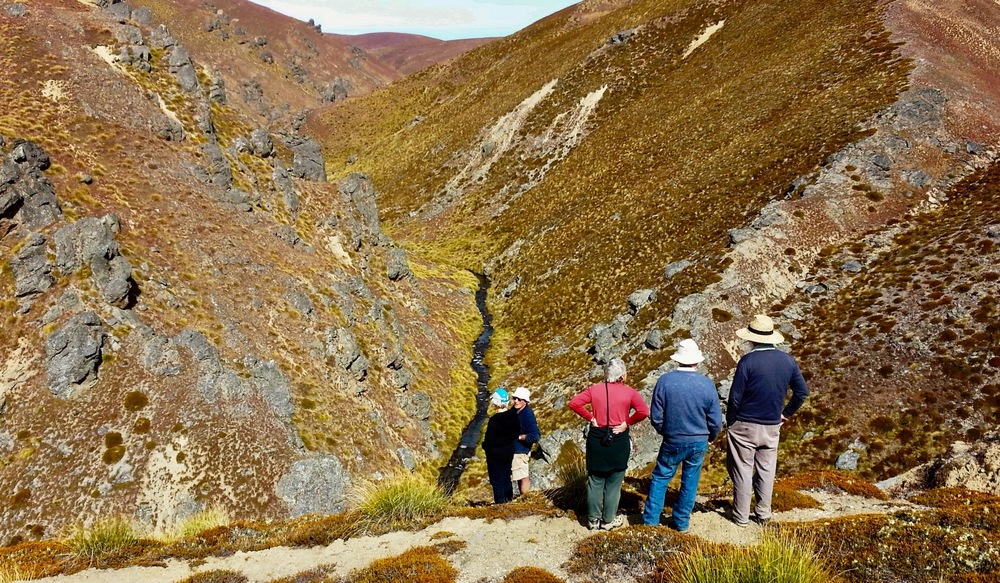Local history: Fatboys and the Mt Criffel goldfield
Ken Allan
20 July 2019, 7:00 PM
 Gold was extracted from these fields in the late 1800s high on the Criffel Range. PHOTO: Upper Clutha Historical Records Society
Gold was extracted from these fields in the late 1800s high on the Criffel Range. PHOTO: Upper Clutha Historical Records SocietyThe name ‘Fatboys’ has nothing to do with a certain brand of motorbikes. Fatboys are the names of two rocks up near the Criffel Diggings, and defines an area broadly on the south eastern side of the Luggate Creek opposite where the Criffel Diggings were situated – and goldfield discovered in 1883.
So where is it? If you head towards Cardrona from Wanaka, not long after you pass Mt Barker you will come across The Larches, a station homestead hidden behind trees. If you look to your left and back a little from where you have come, the Criffel Diggings are approximately in that area up towards the top of the Criffel Range.
In fact, the diggings are so high it was virtually impossible to successfully seek the alluvial gold during the cold winters. The area where the gold is situated is approximately 1,200 metres above sea level. In 1885, the Mining Warden “protected” all claims and mining privileges from May 1 to October 31.
Incidentally, the name ‘Criffel’ originates in Dumfries, Scotland, where a number of the early settlers came from. It is a hill of some 570 metres – a bit lower than the New Zealand version at 1283 metres although there are higher places on the Criffel Range. The diggings ranged from the height of 1200 to 1350 metres.

A 2014 tour of the Criffel Diggings included a view up the Luggate Creek towards the Fatboys goldfield. PHOTO: Upper Clutha Historical Records Society
The late Stan Kane (a past president of the Upper Clutha Historical Records Society) wrote that three men by the name of Halliday (not the same family as the Hallidays of Cardrona), Beattie and Wilson prospected the area in 1882 and discovered the main field in 1883. They managed to keep their discovery relatively quiet for a short while until 1884.
In 1885, there were 50 miners at the diggings and between them they had sold 1,000 ounces of gold the previous season. Halliday, Beattie and Wilson had obtained 300 ounces of gold and had 1,700 loads of wash dirt stacked for washing the next spring. This highlighted the need for water and in 1887 Halliday and Craig built water races to bring water to the diggings – Halliday’s was 15 miles long.
Despite the relative isolation, physical access difficulties, and the snow and ice, there was money to be made – not just from the gold. Both Robert McDougall & Son (in June 1885) and William Monteith (in August 1885) advertised that they had made arrangements to open stores on the “Mt Criffel Goldfield”.
The Fatboys field was apparently discovered in 1887-1888. It started a mini-rush but the ‘pay-dirt’ ran deep under the slope. By 1889 only Neuman and his party were working the area.
Work continued on the Criffel Diggings in the 1890s, the Eldorado Company having received a licence for 60 acres in 1898. Small numbers of other miners persisted but eventually it became uneconomic to mine further.
Location of Criffel Diggings. Fatboys is a little further to the southeast.
I have to let Stan Kane have the final words on the origins of Fatboys: “This field is known as Fatboys. ….There appears two rocks: one a heavy square rock and alongside is a tall slim rock which reminds me of a picture of a young lady in the days when they specialised in corsets. It looks to me as though they are pulled up good and tight. I wonder if the description is a sarcastic throw-off.” (1993)
Stan Kane used to conduct tours of the goldfield in the 1990s and left his notes in the Records Room. Jill Hamel also wrote an extensive report for DOC in 1991, which I have relied on.
Republished with the kind permission of the Upper Clutha Historical Record Society (UCHRS).
TRADES SERVICES
JOBS


